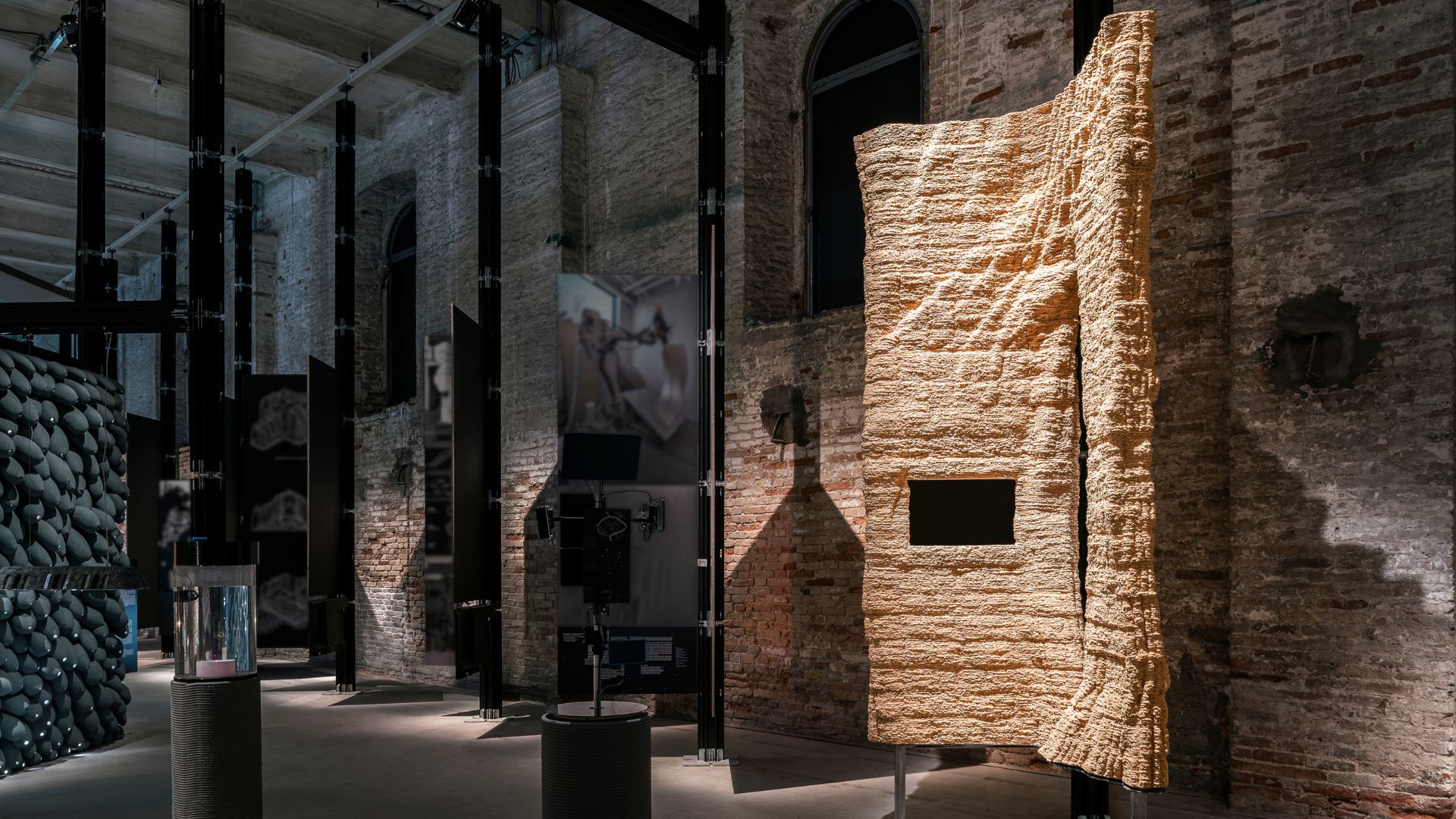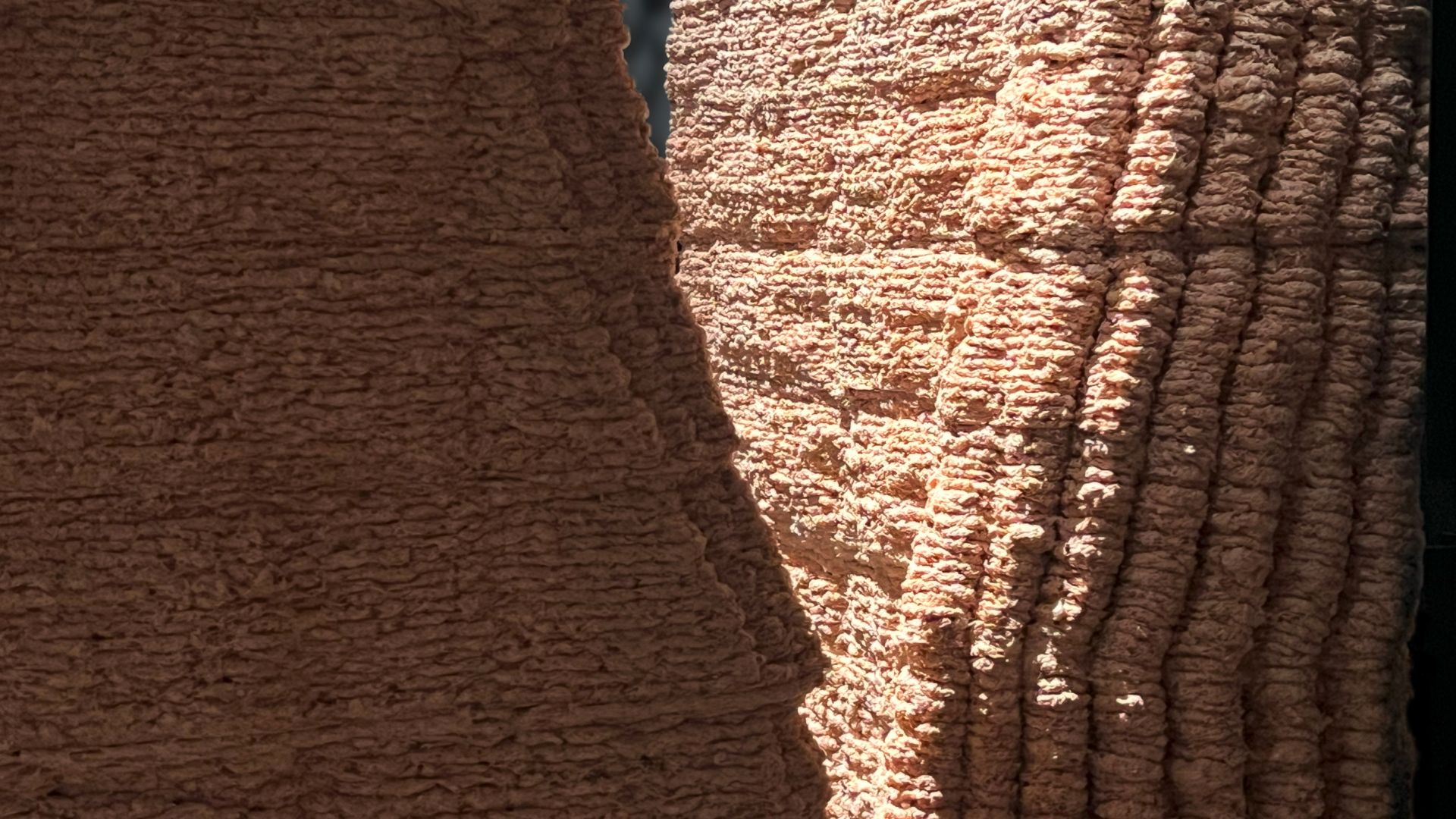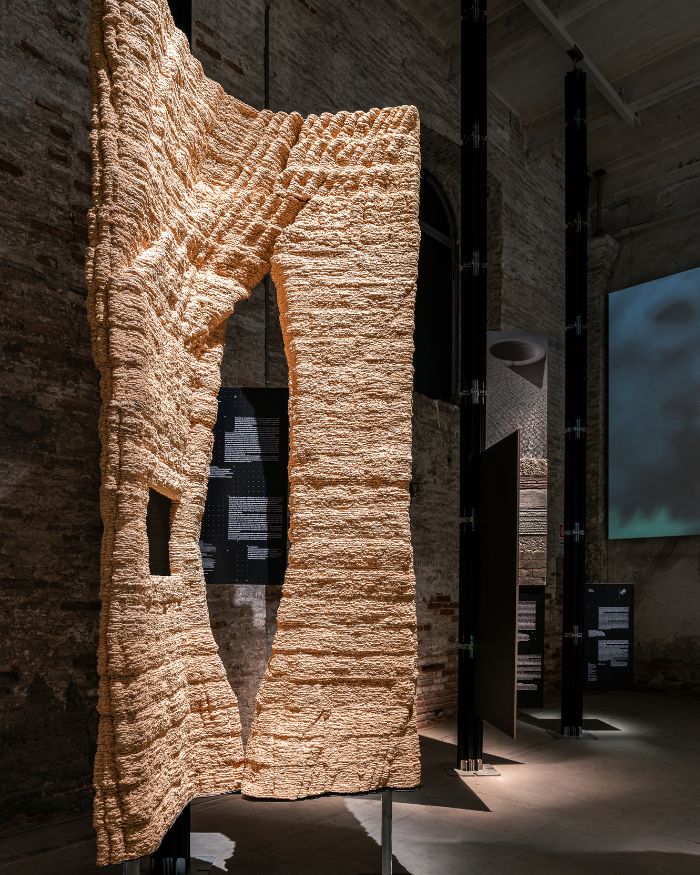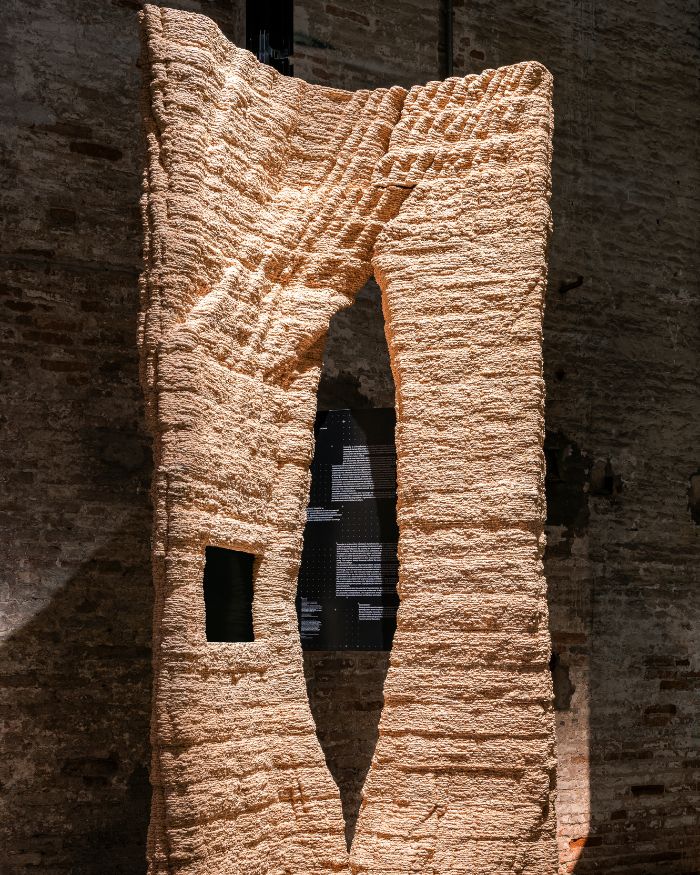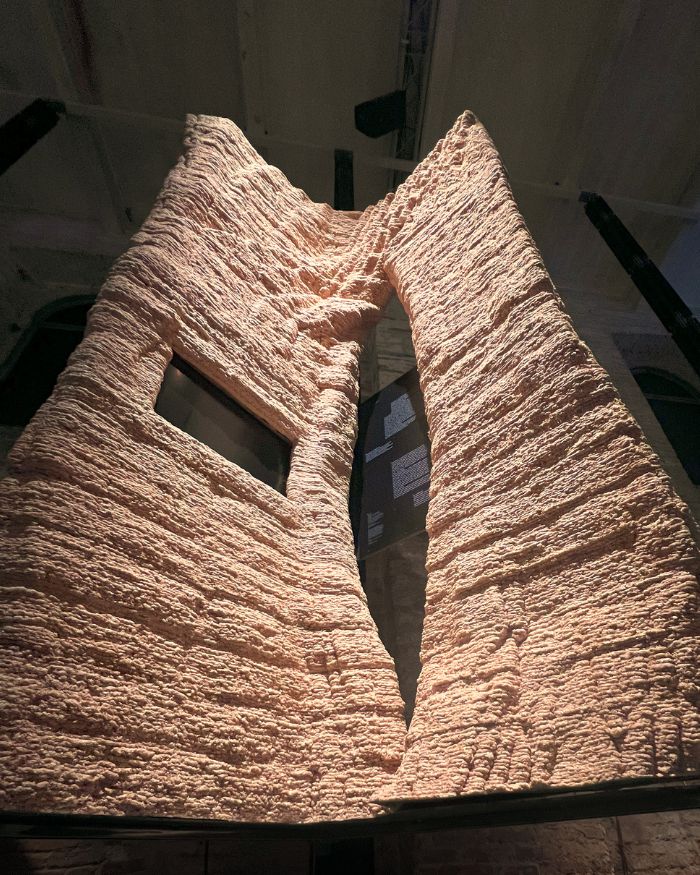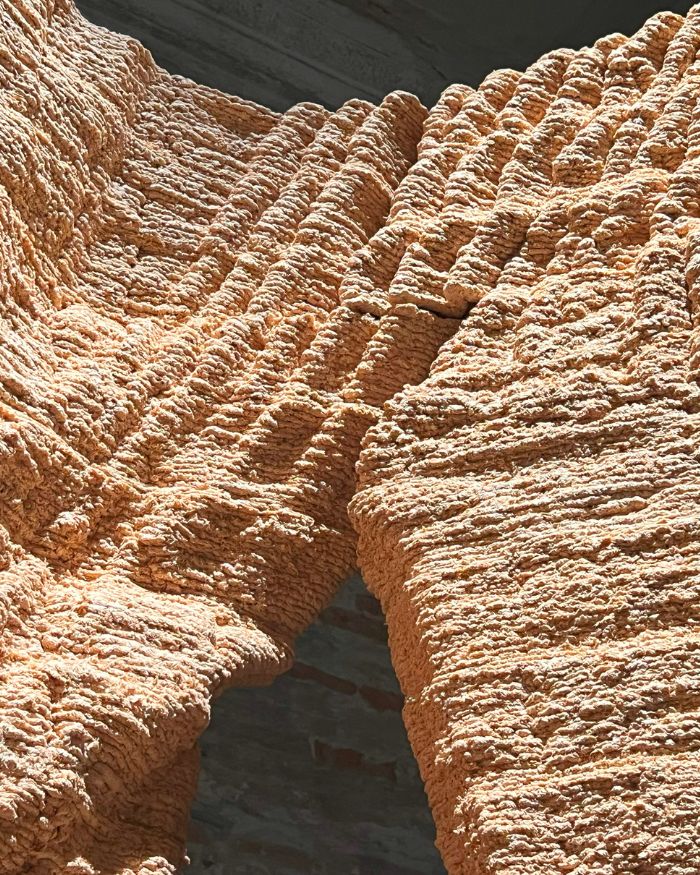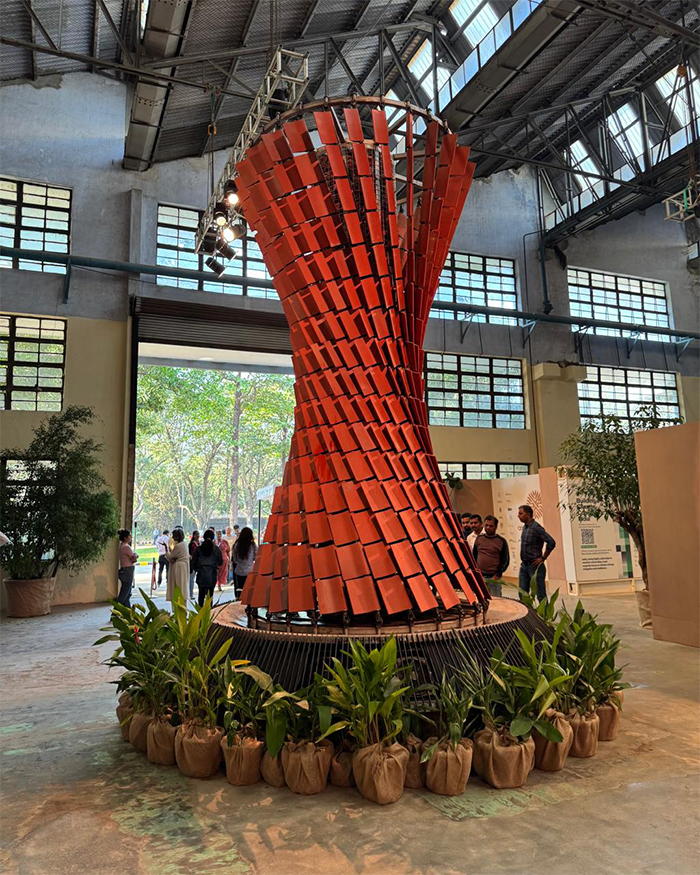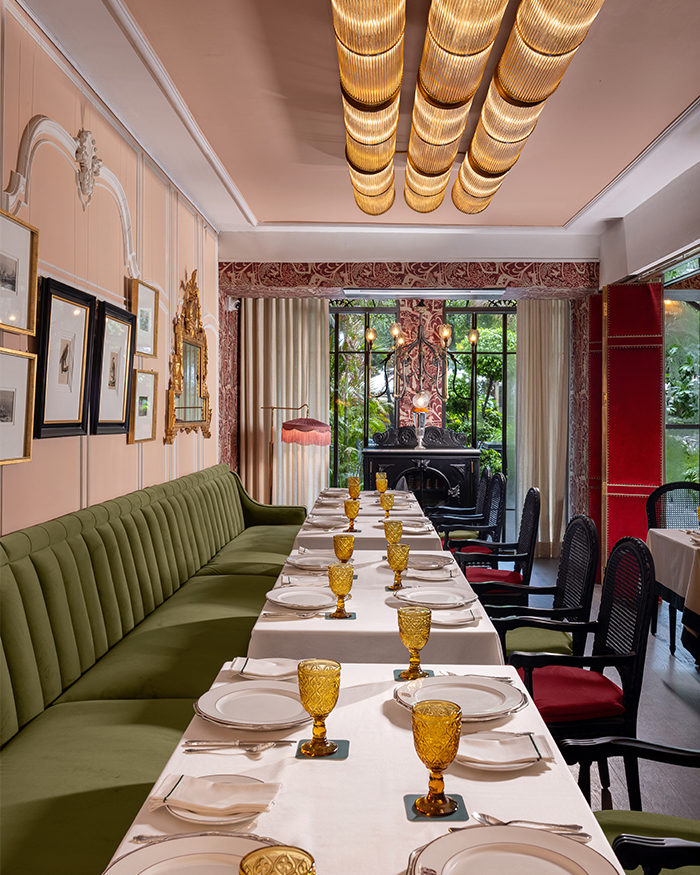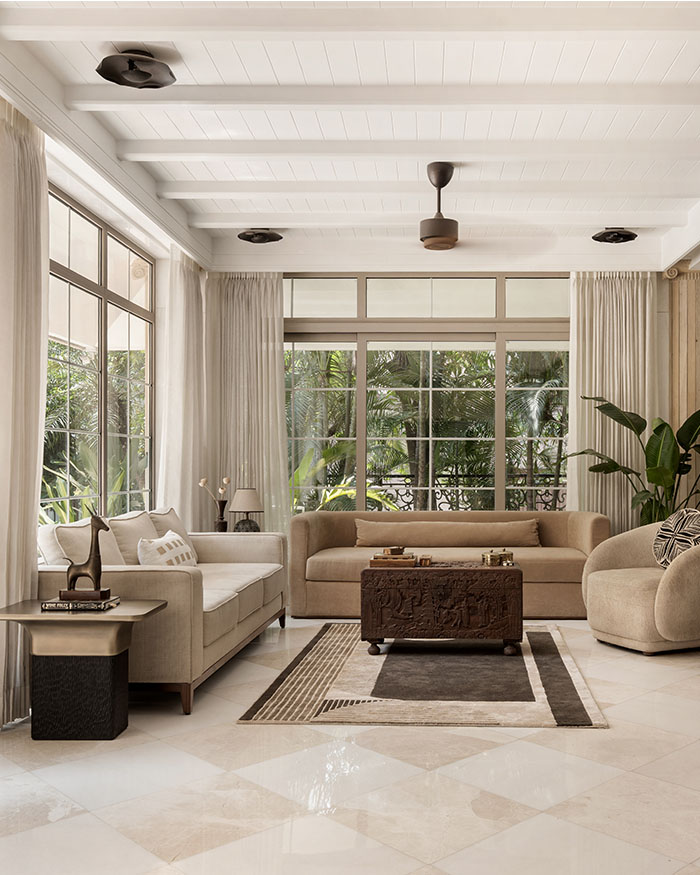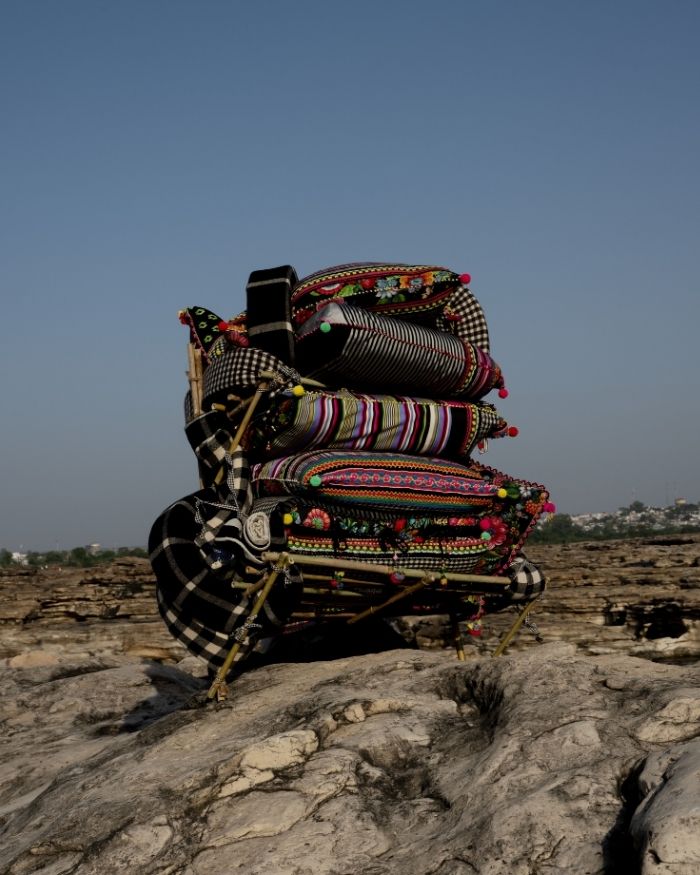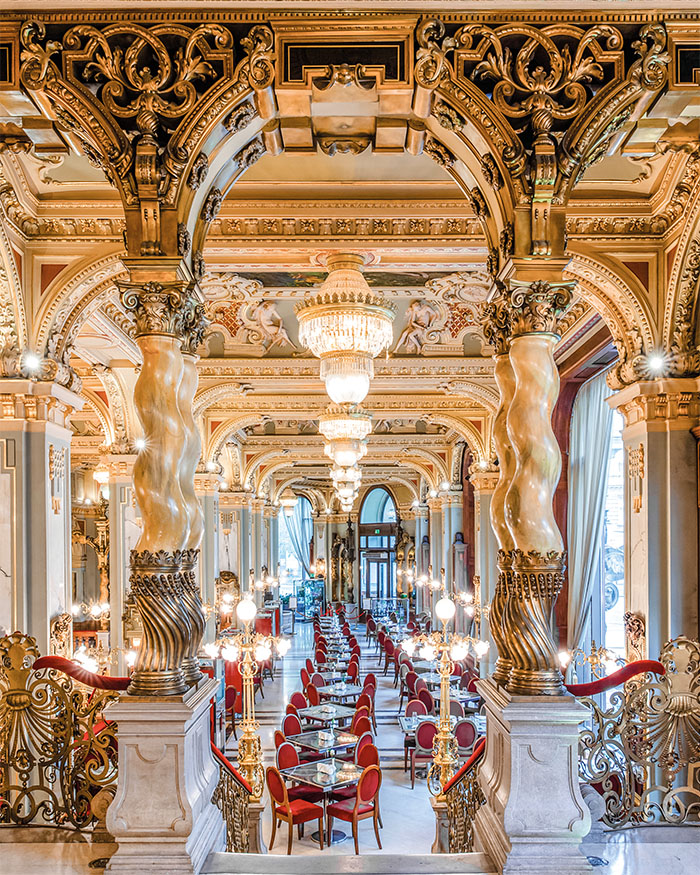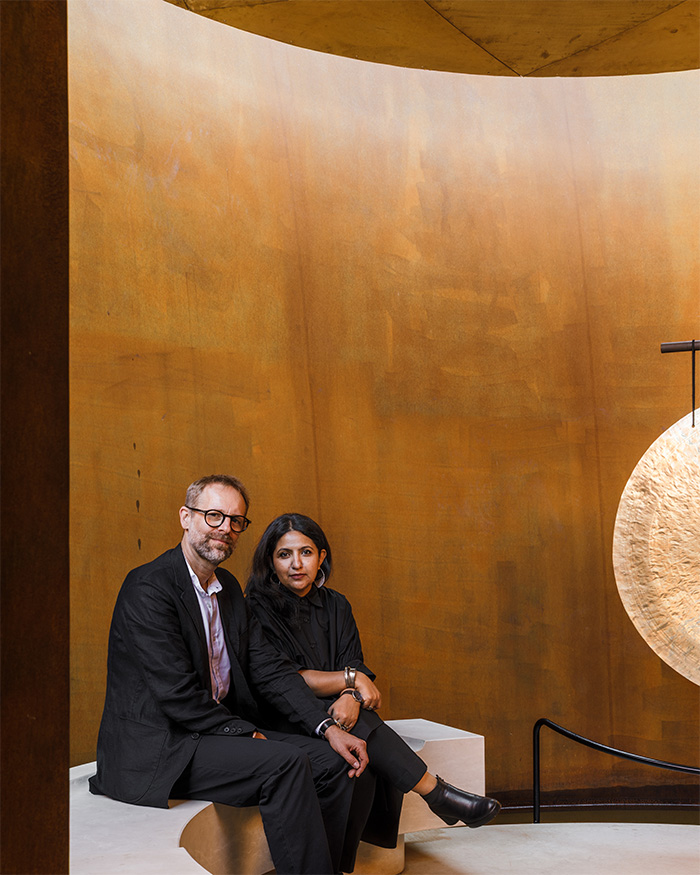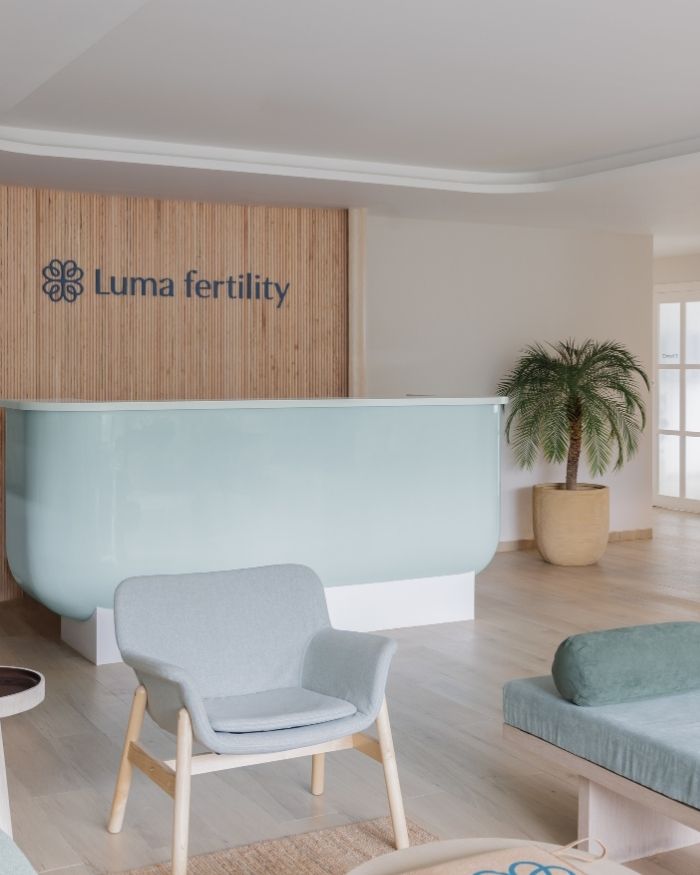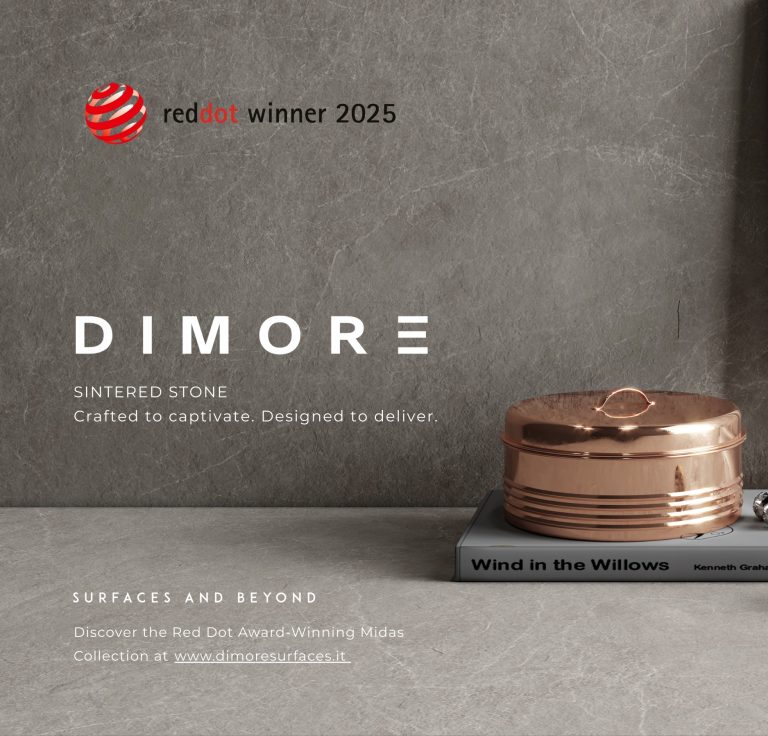Reborn through code
From a distance, it appears almost alive. Two wooden forms twisting, arching, converging in mid-air like lovers caught in a slow-motion embrace. This is inosculation in action: a natural phenomenon where trees grow together over time, now reborn through code and computational design. It’s a digital fairytale, rendered in plant-based wood foam, yet grounded in real-world urgency.
The magic doesn’t stop at the form. The material, developed by Orlab, the cutting-edge research lab at the University of Cincinnati led by Christoph Klemmt, is fully biodegradable and deceptively strong. Printed using an industrial robot, this lightweight wood foam can be shaped into complex structures then returned to the earth when its work is done. Not waste, but nourishment. Not the end, but renewal.
A structure with a soul
In an age when the built environment is often synonymous with permanence and pollution, Inosculae proposes a softer, wiser way forward. It grows like a tree, lives like a sculpture and vanishes like a leaf, leaving behind no debris, only the promise of renewal. It doesn’t just celebrate sustainability; it practices it with poetry and precision.
Rajat Sodhi, known for his pioneering work in biomimetic and algorithmic design helped shape the installation’s digital growth framework, allowing it to echo the nuanced logic of natural systems. Francesco Brenta brought his architectural insight and precision to the structure’s spatial and material articulation ensuring it not only speaks to ecological ideals but lives them in form and function.
This is a statement. About resilience. About regeneration. About letting go. As you walk beneath its vaulted silhouette, which is open to the public from 10th May to 23rd November 2025, you’re not just witnessing the future of design. You’re standing in a moment where nature and technology finally speak the same language.

